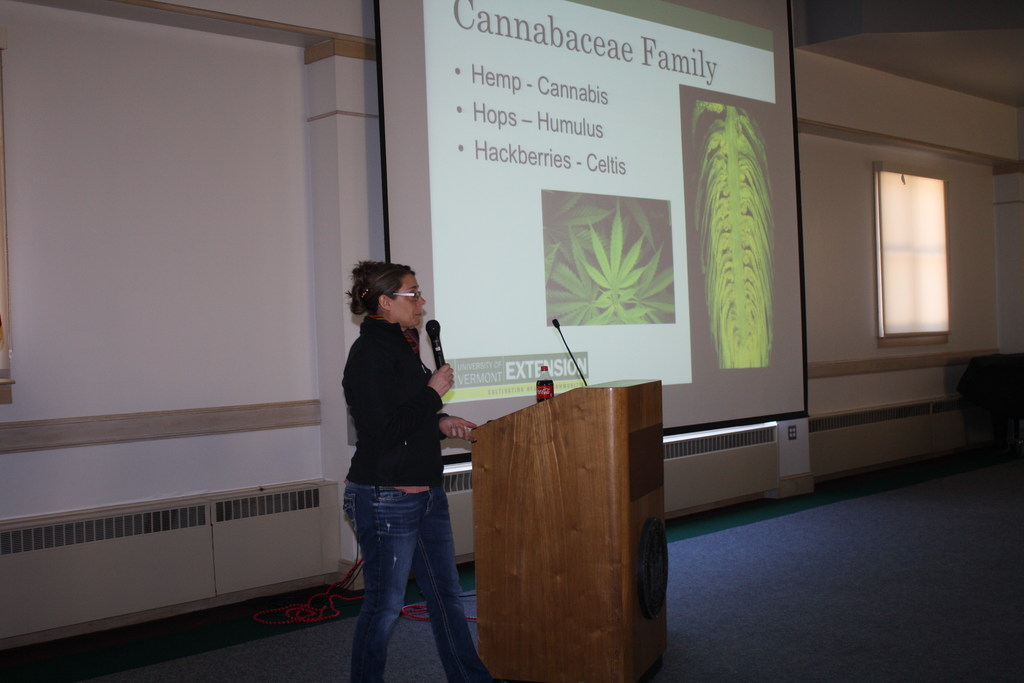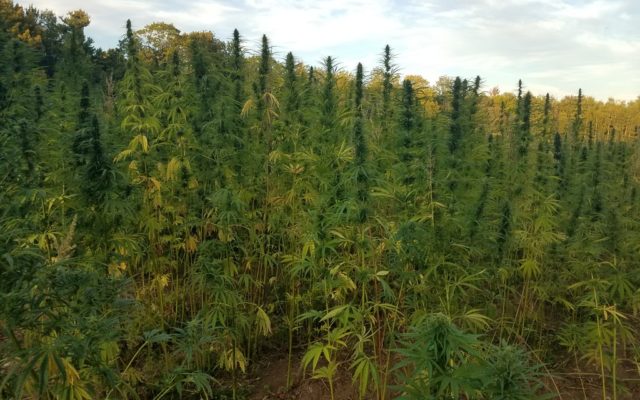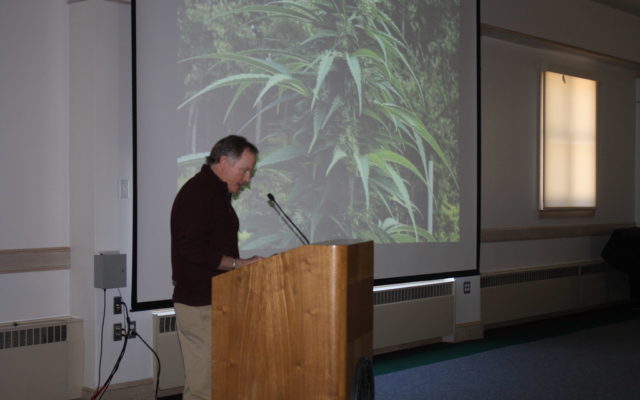
PRESQUE ISLE, Maine — Farmers, researchers and state officials got together during a March 1 conference in Presque Isle to discuss the potential benefits and challenges of growing industrial hemp for grain and fiber crops.
During the Maine Grain Conference at the University of Maine at Presque Isle, Heather Darby, agronomic and soil specialist for the University of Vermont Extension, began a special session on hemp by talking about personal research successes and setbacks with the crop.
Although hemp is a type of cannabis, the crop contains less than .3 percent of tetrahydrocannabinol, more commonly known as THC, unlike recreational or medical marijuana. THC is the compound that induces psychoactive effects or gets the user “high.” The seeds and flowers from hemp can be used in products such as newsprint, pet food textiles and clothing.
Industrial hemp can be grown in any region of the country, Darby said, as long as farmers maintain healthy soil that does not become too moist due to consistent rainfall or other precipitation. She noted that hemp grows best when farmers plant seeds after June 1 and harvest from Labor Day through the second week of September before temperatures become more consistently cold and the chances for precipitation increase.
As part of research hemp fields in Alburgh, Vermont, Darby and colleagues have grown the crop since 2016. Their most successful years have been in 2017 and 2018 during which they yielded 600 and then 1,200 pounds of hemp despite having one season that was wet and cold and the next more dry and humid.
“I always recommend that people do not wait until late September to harvest. If they do, then 50 to 60 percent of their hemp will be gone,” Darby said. “The weather conditions in Vermont are similar to Maine in that regard. One of the lessons that I’ve learned is how small of a window you have during growing season.”
That short growing season also means that farmers must be aware of deadlines for obtaining their state growing license for industrial hemp. Gary Fish, horticulturist for the Maine Department of Agriculture, Conservation and Forestry, stated that the Maine Industrial Hemp Program accepts applications for licensure from Jan. 1 to April 1 of each year. All hemp growers must renew their license annually.
Hemp growers also must pay an initial $100 fee with their application and provide documentation from a third-party lab that their seed sources for hemp will come from parent plants that test below the allowed .3 percent of THC. Once Fish’s department sends growers approval for their application, growers pay $500 for an agreement fee and $50 per acre of hemp. They also sign an agreement for the DACF to keep records on each of their hemp crops for three years, which by state law are public documents.
State law also stipulates that hemp growers cannot mix industrial hemp with recreational or medical marijuana and that they only grow their crops outdoors. They must notify DACF of their intent to harvest crops 15 days prior.
- A field of industrial hemp grows in Farmington in August 2018. (LoveGrown Agriculture Research LLC)
Fish said that the hemp program in Maine has grown significantly over the past three years — with his department accepting three applications and two grower agreements in 2016, 35 applications and 32 agreements in 2017, and 104 applications and 61 agreements in 2018. Thus far he has processed 32 applications for 2019.
Although Fish’s department gave licenses for 26 acres of land to Maine farmers in 2016, 144 acres in 2017 and 1,047 in 2018, the risky nature of growing hemp reduced the acreage that farmers actually grew. In 2016, farmers produced only a quarter of an acre of hemp, while 2017 saw 32 acres planted and 2018 produced 500 acres.
“We sent out a survey in 2018 for which half the farmers that we licensed responded. Most said that their number one challenge was harvesting the hemp,” Fish said. “It’s not a simple crop to harvest. You have big plots of land with plants that can get up to two to four meters tall.”
Despite the vast potential for production of industrial hemp, John Jemison, extension professor of soil and water quality for the University of Maine Cooperative Extension, wants growers to be fully aware of the risk and challenges before investing in the crop.
“It’s not a crop you can easily transfer into other states. Some states are still more conservative and don’t like the idea of any type of cannabis,” Jemison said.
Like with other crops, Jemison noted that timing is everything when it comes to farmers having a successful season. He recommends that farmers plant hemp no later than June 10 and do so during a period when no precipitation is expected for the near future. They also must consider the costs of acquiring a state license, finding labor during the planting and harvest seasons, locating space to dry the hemp plants after harvest, and the cost to purchase the plants, which average around $5 to $10 per plant.
Farmers also must watch out for common diseases that attack hemp crops such as white mold and keep six feet between their rows of plants to prevent the spread of diseases.
But according to a 2014 report by Washington State University’s school of economic sciences, referenced in a Bangor Daily News article last summer, research suggests hemp could be a competitive crop for U.S. farmers. Data from 2014 indicates the U.S. spent $581 million in 2013 for industrial hemp-based products including seeds, soaps, lotions, paper, auto parts and building materials.
“I’m someone who prefers to be cautiously optimistic about hemp,” Jemison said Friday at the UMPI conference. He still wants farmers to know about the potential difficulties. “I believe it has potential, but I talk to farmers all the time who are interested in growing hemp and want them to know everything beforehand.”
- John Jemison, extension professor at the University of Maine Cooperative Extension, speaks about the realities of growing industrial hemp during the Maine Grain Conference on Friday, March 1. (Melissa Lizotte)






